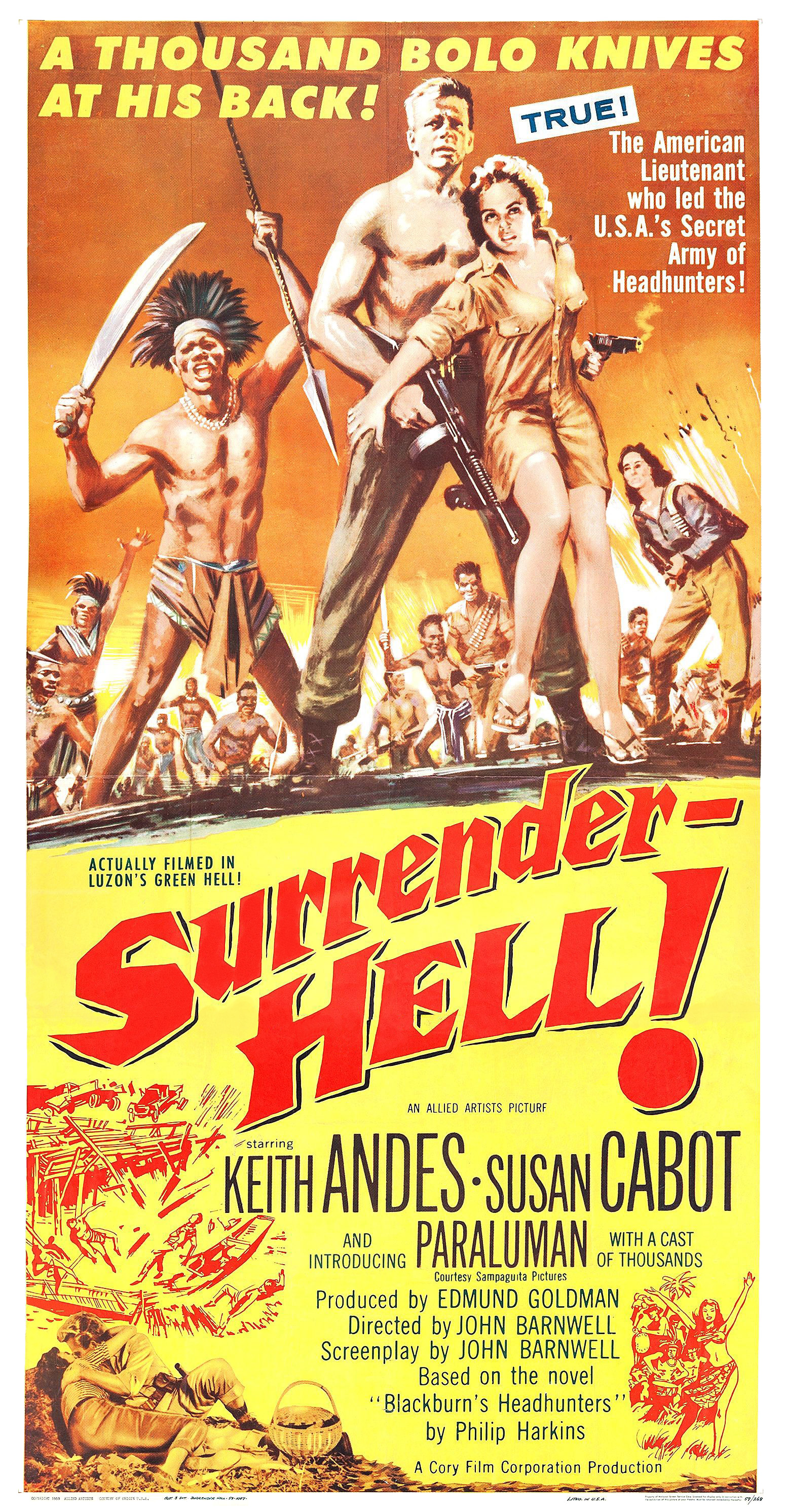
“Surrender Hell” (1959) undoubtedly has more in common with other “B” pictures of the period 1939–1973 than it does with most studio-produced war films in this regard. Its hero is Don Blackburn, veteran United States’ army lieutenant, who refuses to surrender when the Philippines fall under Japanese dictatorship during the War. Instead, he heads up into the hills, hoping to enlist guerrilla patriots whose mission will be to make life difficult for the conquerors until Gen. MacArthur’s promise to return to liberate the islands from domination can be fulfilled. This he does by organizing and leading elements first of Filipino then of Filipino and headhunter tribesmen as well as a late-arriving small U.S. force, in courageous, dangerous and ultimately successful actions. Lack of funds forced the film’s director, John Barnwell, who worked up the script from real-life Donald Blackburn’s memoirs, Philip Harkin’s “Blackburn’s Headhunters”, and Charles Martin’s intelligent narratives in the script to employ static scenes, marching scenes and incorporated footage; his budget in other words only allowed him latitude to recreate some claustrophobic dramatic scenes and limited combat stagings. The argument of the film, which happens to be true, is that this one trained solider, an American, was the major creator behind strategic plannings, training of troops to use weapons and to be effective wartime raiders, and only toward the end the leading force behind two successful major confrontations with Japanese regular troops. The story resulting from these creative efforts I say is episodic, effective in its dramatic scenes and undoubtedly less successful in its depiction of the entire narrative of the guerrillas’ growth and operations, despite (by then Colonel) Blackburn’s having acted as the film’s technical adviser. In fact, all the hero of the story had to do was get his men to keep quiet on command, instruct them in use of modern weapons and issue orders for attacks whenever the opportunity could be seized; and this he apparently did, in reality, with great success for several years. Francisco Buencamino Jr. provided unobtrusive music, with Filipino experts providing the film’s other cinematographic and art direction contributions, which are I claim above average for their minuscule budget. Only several actors are credited in the film, Susan Cabot for a brief early role, Paraluman as Pilar in an extended and satisfying tragic performance, and Nestor de Villa as Major Bulao. But the body of the film revolves about the towering , brilliantly nuanced and legendary performance given by Keith Andes as future Colonel Donald Blackburn. His classically-trained speech, his ability to handle all acting situations and challenges and his astonishing success in keeping a continuity of his characterization secure across weeks of filming in demanding and varied locations I find to be remarkable in itself. That he was able to do this with a cast of ESL speakers and low- grade actors and technicians is all-the–more-admirable as an achievement. His honest work here I say eclipses even the very good performance in the same year by Gregory Peck in the high-budget “Guns of Navarone”, a noted leading performance; his role therefore must go down as one of the least appreciated and most successful in film history. That one of the finest leading men of his generation was relegated to “Damn Citizen”, “Model For Murder” and “Surrender Hell” is an indictment of movie moguls’ artistic absurdity. That he was able to extract as much as he did from the material he was given to work with in these films as well as “Back From Eternity”, “Split Second” and other films borders upon the miraculous. I recommend this film to those who enjoy fictionalized biography and WWII films; it has effective moments, good work by the Japanese leader in several scenes, and a good deal of memorable footage, thanks largely to Keith Andes professional superiority throughout the filming. He is unarguably more-than-memorable here in every respect.
